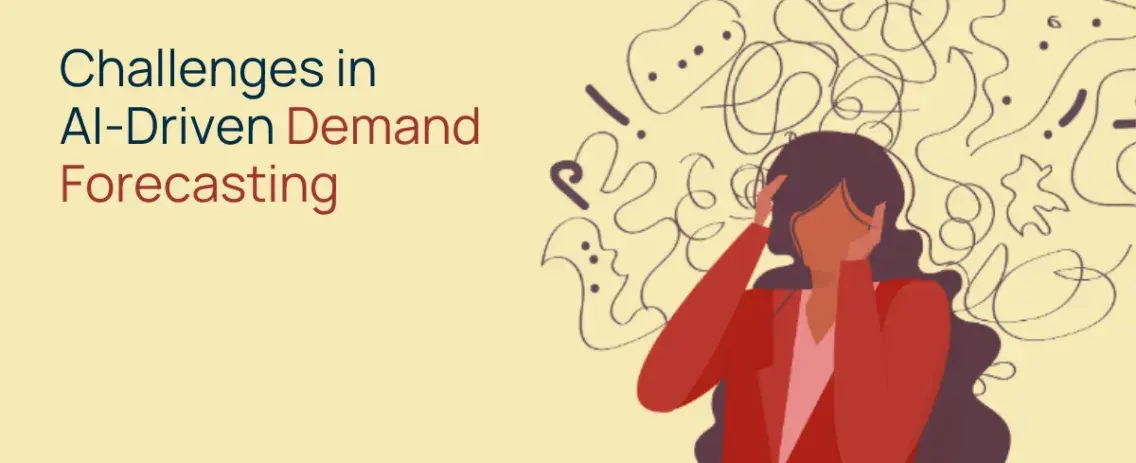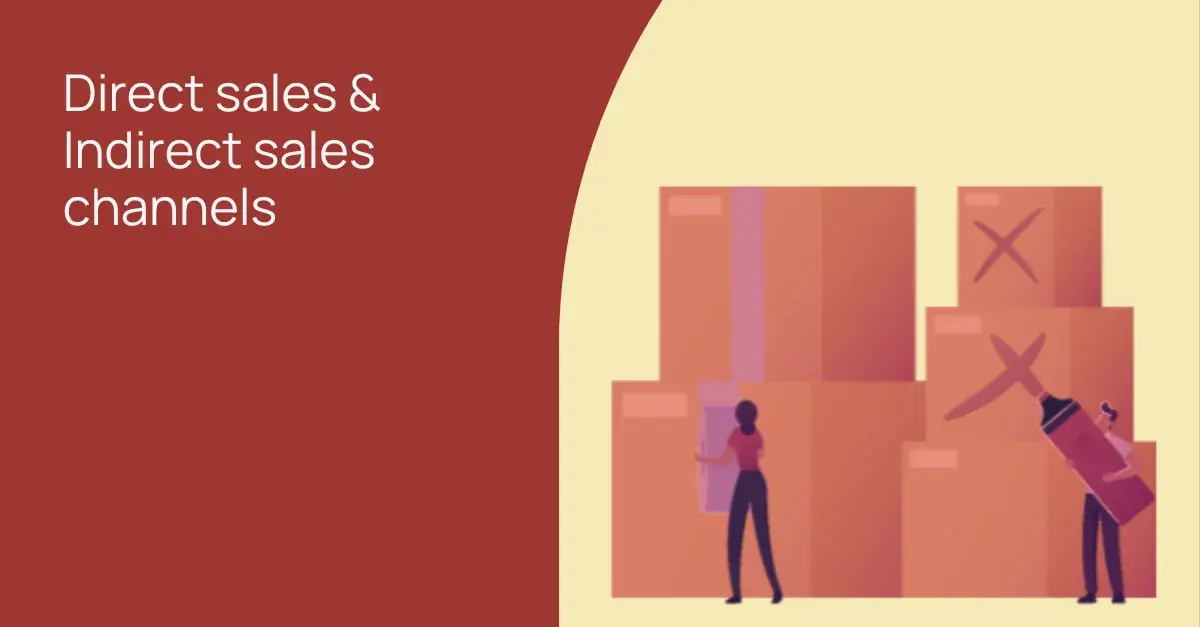
Common pitfalls and challenges in AI-driven Demand Forecasting in CPG
AI-driven demand forecasting, especially in the context of Consumer Packaged Goods (CPG), has gained significant importance lately. It promises to revolutionize demand forecasting in CPG by optimizing revenue predictions and enhancing decision-making processes. However, this journey has its obstacles. In this blog, we’ll explore the common pitfalls and challenges in AI-driven forecasting in CPG and discuss solutions to help navigate them effectively.
The promise of leveraging AI for Demand Forecasting in CPG
AI-driven forecasting in CPG industries offers the promise of improved forecast accuracy, better inventory level management, and streamlined production processes for various products. It leverages AI algorithms to analyze vast datasets, historical sales data, consumer behavior, and external factors like market trends and economic indicators. This approach allows CPG companies to predict which products will be in demand at specific times, leading to increased efficiency and customer satisfaction.
Now, let’s delve into the common challenges and pitfalls that organizations may face when implementing AI for demand forecasting in CPG.
Data quality and availability:
AI models are data-hungry, especially when it comes to AI for demand forecasting in CPG. They feed on a variety of datasets, including historical sales data, consumer behavior, market trends, and external factors. However, data quality and availability can pose significant challenges.
- Challenge: Inconsistent, incomplete, or biased data can significantly impact the accuracy of forecasts. Flawed or limited input data can lead to inaccurate predictions, which, in turn, result in misguided business decisions.
- Solution: To overcome this challenge, CPG companies need to prioritize data quality and availability. Implementing data cleansing and ensuring diverse data sources are essential. Collaborating with data experts to curate the best datasets for AI-driven forecasting can significantly improve the accuracy of predictions.

Overfitting and model complexity:
Complex AI models can be prone to overfitting. This occurs when a model learns the "noise" in the training data rather than the actual patterns. These models perform exceptionally well on the training data but fail to generalize to unseen data. This can be a significant pitfall when using AI for demand forecasting in CPG.
- Challenge: Overfitted models might generate impressive results during testing but fail in real-world scenarios. Businesses might invest in overly complex models that do not provide meaningful insights, leading to wasted resources and time.
- Solution: Mitigating overfitting and model complexity requires striking a balance between model sophistication and real-world applicability. CPG companies should ensure their AI models are validated with real-world data to confirm their utility.
Changing market dynamics and external factors:
In CPG, markets are influenced by numerous external factors such as economic changes, geopolitical events, natural disasters, or sudden shifts in consumer behavior. AI models may struggle to adapt swiftly to these dynamic influences, and this becomes a critical challenge in AI demand forecasting for CPG.
- Challenge: AI models trained on historical data may not accurately predict future demand during unprecedented events. Sudden market shifts can render pre-trained models obsolete, requiring constant adaptation and retraining to maintain accuracy.
- Solution: While AI can’t predict black swan events, it can adapt. Implement mechanisms that enable AI models to continually learn from new data in the context of CPG. Combining AI-driven predictions with human intuition, such as adjusting when new information emerges, looking at outliers, and operating on an exception-based model, can create a dynamic forecasting system capable of responding to the changing landscape.
AI for demand forecasting & the black box syndrome:
One of the greatest challenges from a user perspective is what some refer to as “black box syndrome.” AI algorithms, especially intricate ones, can be challenging for non-technical users to fully understand. The fear of making decisions based on a system they don't comprehend is a significant hurdle for CPG professionals using AI for demand forecasting.
- Challenge: Users may worry about the lack of transparency in AI models. They want to know how the system arrived at a particular prediction and whether it’s reliable.
- Solution: Addressing this challenge involves offering user-friendly interfaces and clear explanations of the measures in place to ensure the model’s reliability, and people’s understanding of the outcomes. Conducting training workshops to empower users with basic knowledge can also be beneficial. Demystifying the “black box” is not just about explaining AI concepts but, more importantly, explaining the metrics and processes that the software employs, making AI insights accessible to alleviate these concerns.

AI and loss of human control:
There's a genuine fear that AI might lead to a loss of human control and intuition in decision-making processes. This challenge arises from concerns about becoming overly reliant on AI systems, especially in CPG demand forecasting.
- Challenge: Users may resist AI-based solutions, fearing that they will be replaced by AI or that their expertise will become obsolete.
- Solution: To counter this challenge, it’s crucial to emphasize that AI is simply a tool to enhance decision-making, not replace it, particularly in CPG demand forecasting. Encourage users to interpret AI-driven insights alongside their domain expertise to ensure a balanced approach. Human intuition and AI-driven predictions can complement each other effectively.
Resistance to change when introducing AI for demand forecasting:
Change can be challenging, especially when established methods have been in place for a long time. Users may resist adopting AI-based solutions, even when they promise substantial improvements in CPG demand forecasting.
- Challenge: Resistance to change can hinder the adoption of AI-driven forecasting in CPG.
- Solution: Mitigate this challenge by implementing change management initiatives, user education, and highlighting the benefits of AI-driven forecasting in CPG. Involving users in the transition process and addressing their concerns can foster a positive attitude toward change.
Using AI for demand forecasting: takeaways
AI-driven forecasting in the CPG industry has the potential to reshape the landscape by enhancing personalized product assortments, optimizing inventory levels, and streamlining production processes. However, it's not without its challenges. Pitfalls related to data, model complexity, external factors, user understanding, and change management can complicate the adoption of AI for demand forecasting in CPG.
With the right strategies and solutions, CPG companies can navigate these challenges effectively and unlock the true potential of AI in forecasting. By leveraging Visualfabriq's demand forecasting software, you can overcome the common pitfalls and challenges associated with AI-driven forecasting. Visualfabriq empowers your team to make data-driven decisions, resulting in optimized inventory management, improved customer satisfaction, and, most importantly, increased revenue.
Take your first step toward AI-driven demand forecasting with Visualfabriq today. Book a demo now and learn how our AI-enhanced solution can revolutionize your CPG forecasting.

.webp)

